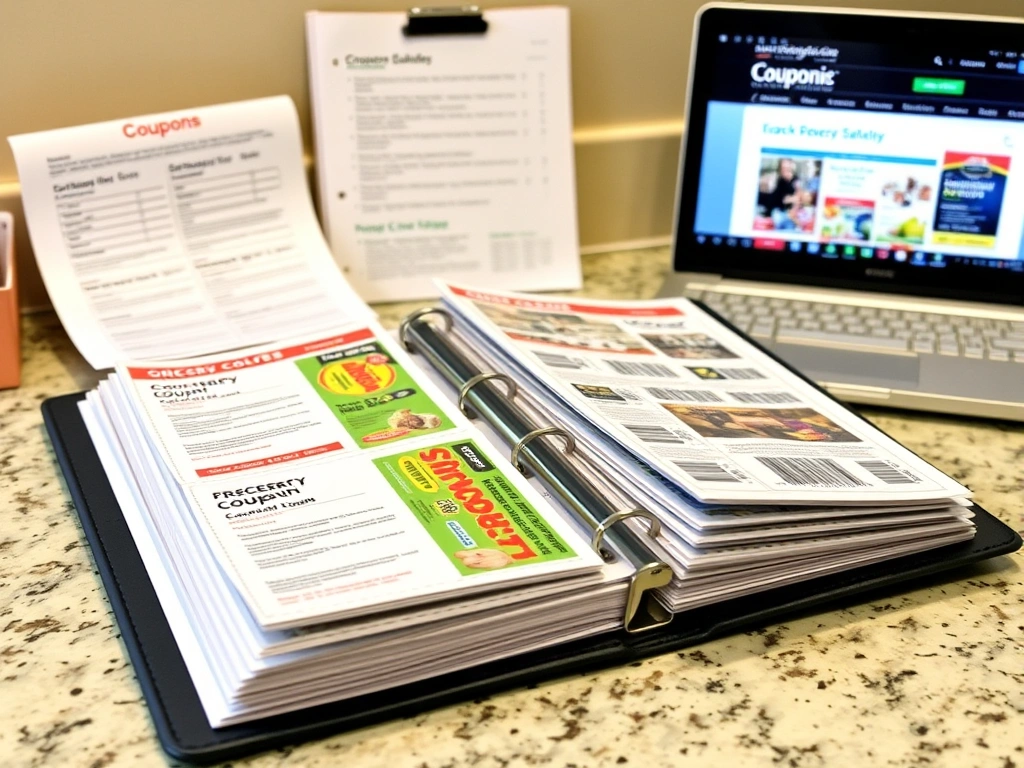12 Frugal Living Tips That’ll Help You Save Thousands This Year!
In today’s fast-paced world, saving money often feels like an uphill battle. However, embracing frugal living can lead to substantial savings and a more fulfilled lifestyle.
This article presents twelve practical frugal living tips that will help you rein in your spending without sacrificing quality of life. Whether you’re looking to cut down on groceries, household expenses, or entertainment, there’s something here for everyone. Let’s embark on this journey towards a healthier financial future!
1. Create a Monthly Budget

A solid budget is the cornerstone of frugal living. By mapping out your monthly income against expenses, you gain clarity on where your money goes and identify areas to cut back.
Consider using budgeting apps or spreadsheets to track your spending in real time. Aim for a zero-based budget where every dollar is assigned a purpose. This not only helps in money management but also gives you a sense of control over your financial destiny.
Set aside funds for savings and emergency expenses and revisit your budget monthly to adjust as needed. The more detailed your budget, the more you can save!
2. Plan Your Meals
Meal planning not only saves time in the kitchen but also significantly reduces grocery bills. By preparing a week’s worth of meals in advance, you can minimize impulse buys and food waste.
Start by creating a grocery list based on your meal plan, focusing on seasonal and sale items that provide the best value. Explore recipes that utilize similar ingredients to maximize your grocery purchases and look out for bulk-buy options for pantry staples.
Incorporating leftovers into your plan can also stretch your budget further while keeping meals exciting and varied.
3. Use Coupons Wisely

Coupons can be a frugal shopper’s best friend when used strategically. Start by researching local stores and websites that offer digital coupons, cashback apps, and loyalty programs.
Combine manufacturer’s coupons with store promotions to maximize savings on essential items. Keep an organized binder or app to manage your coupons, ensuring you never miss a deal.
However, avoid buying items solely because you have a coupon; stick to purchasing what you need to prevent unnecessary spending.
4. Embrace Thrift Shopping
Thrift stores are treasure troves of second-hand goods waiting to be discovered. From clothing to furniture, you’ll often find high-quality items at a fraction of retail prices.
Make a habit of visiting local thrift stores regularly, as inventory changes frequently. Look for seasonal items, unique home decor, or even vintage clothing that can add character to your wardrobe and home.
Don’t forget to check online thrift stores and community swap groups for additional savings opportunities.
5. Cut Out Unnecessary Subscriptions

In the digital age, subscription services can quickly add up. Take a closer look at your ongoing subscriptions, from streaming services to monthly boxes.
Ask yourself which services you genuinely use and enjoy, and consider canceling those that you don’t. You might be surprised how much you can save by simply trimming the fat from your monthly expenses.
Switching to free alternatives or sharing subscriptions with family and friends can also help you retain access without breaking the bank.
6. Automate Your Savings
Setting up automated transfers to your savings account ensures that you prioritize savings every month without even thinking about it. Designate a specific amount to be transferred right after payday.
This method not only helps you build an emergency fund faster but also minimizes the temptation to spend that extra cash. Consider high-yield savings accounts that offer better interest rates to make your money work harder.
Regularly reassess your savings goals and adjust your automated amounts as your financial situation changes.
7. DIY Home Projects

Instead of hiring out for home repairs or upgrades, consider tackling projects yourself. From painting rooms to creating your own furniture, DIY can be both fulfilling and cost-effective.
There are countless online resources, including video tutorials and step-by-step guides, that can help you learn new skills. Focus on projects that add value to your home or improve functionality without overspending on labor.
Reusing materials and upcycling old furniture can further enhance your savings while contributing to a more sustainable lifestyle.
8. Utilize Public Resources
Public libraries and community centers are often overlooked gems that offer a wealth of resources for free. Libraries provide access to books, movies, e-books, and even workshops.
Many community centers host free events, exercise classes, and educational programs that can enrich your life without costing a dime. Explore local resources to enhance your skills, enjoy entertainment, and meet new people.
Taking full advantage of these offerings can significantly reduce your entertainment and educational expenses.
9. Negotiate Bills and Services

Many people don’t realize that negotiating bills can lead to significant savings. Contact your service providers—like internet, phone, or insurance—and inquire about discounts or lower rates.
Be polite yet persistent, and don’t hesitate to mention competing offers from other companies. You may also discover loyalty discounts or promotional rates that can help lower your expenses.
Regularly reviewing your bills can help you catch any unexpected charges or opportunities for savings.
10. Explore Alternative Transportation
Transportation costs can quickly eat into your budget, so consider alternative methods to save money on commuting. Carpooling, biking, or using public transit can significantly reduce fuel and maintenance costs.
If you live in an urban area, explore ridesharing options or even electric scooters as a fun and economical alternative. Plus, these methods contribute to a healthier lifestyle and reduced carbon footprint.
Evaluate your transportation options regularly to find the most cost-effective solutions for your daily needs.
11. Learn Basic Cooking Skills

Eating out can be one of the biggest drains on your budget. Learning to cook simple, delicious meals at home can save you hundreds each month.
Start with basic cooking skills and gradually experiment with new recipes. Investing in essential cookware and ingredients can make meal preparation both enjoyable and affordable. Consider batch cooking to save time and ensure you always have healthy options on hand.
Cooking at home allows you to control your ingredients, portion sizes, and ultimately your spending.
12. Make Your Own Cleaning Products
Commercial cleaning products can be expensive and often contain harsh chemicals. Making your own cleaning supplies using simple ingredients like vinegar, baking soda, and essential oils can save you money and create a healthier home environment.
Research various DIY cleaning recipes tailored for different surfaces and purposes to ensure effectiveness. Not only will you save on costs, but you’ll also reduce plastic waste from store-bought products.
This eco-friendly approach aligns perfectly with a frugal lifestyle, allowing you to clean smarter, not harder.
Conclusion
Embracing frugal living is not just about saving money; it’s about making conscious choices that lead to a more fulfilling lifestyle. By implementing these tips, you can achieve significant savings while enjoying life to the fullest.
Remember, small changes can lead to big results over time. Share your favorite frugal living tips in the comments below, and let’s inspire each other on this journey to financial wellness!







